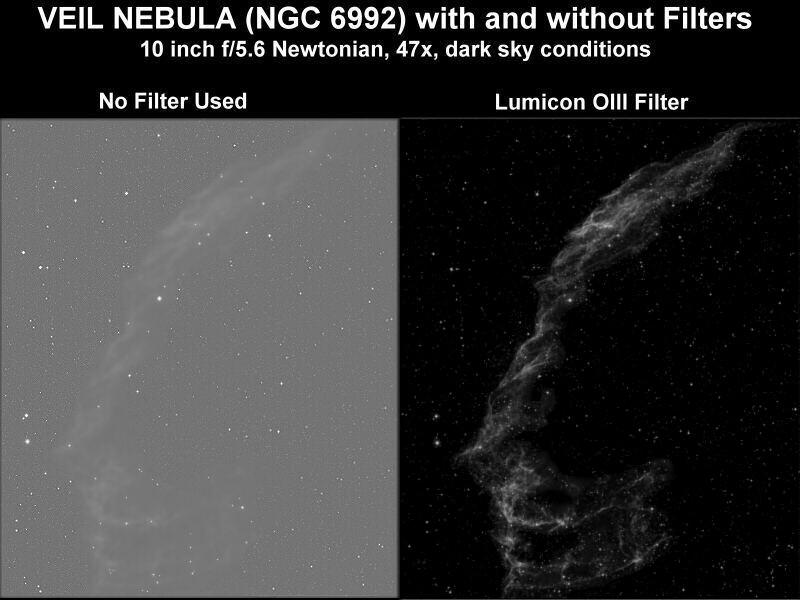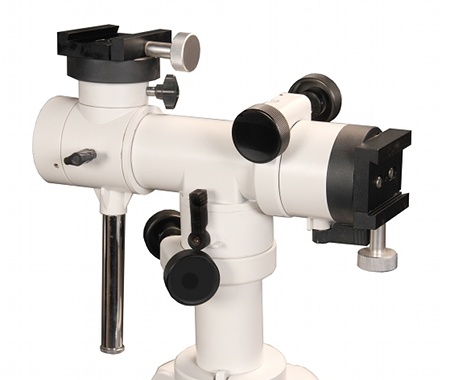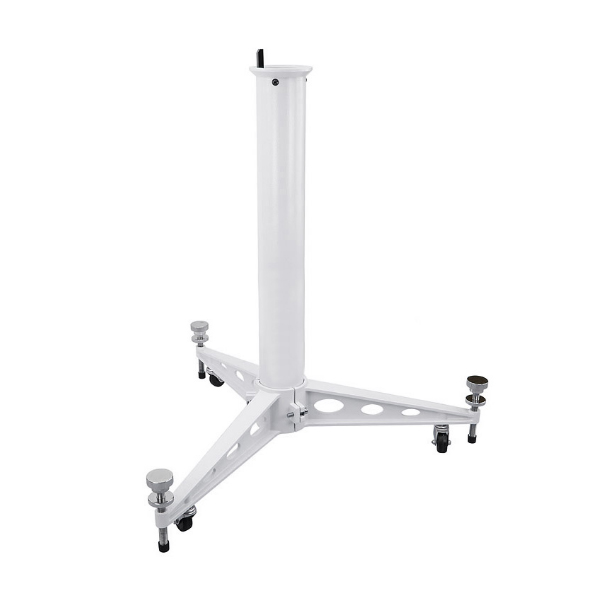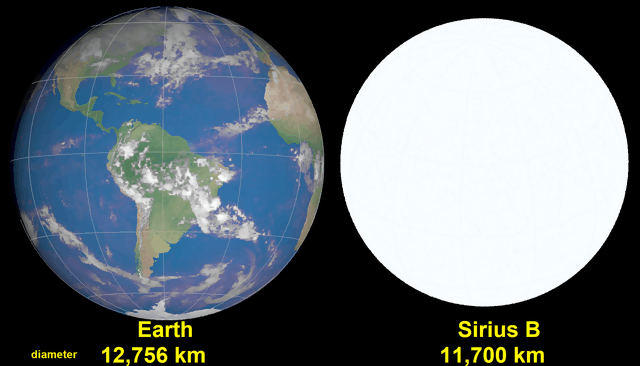-
Posts
53,760 -
Joined
-
Last visited
-
Days Won
455
Content Type
Profiles
Forums
Gallery
Events
Blogs
Posts posted by John
-
-
This is the mount head:
This is the pillar mount:
To give you an idea of size, each leg on the bottom of the pillar mount is 42cm long and the pillar top is 81cm high.
With the scope, it is quite an expensive setup at around £1,000 including a dew shield which you will need for the maksutov-cassegrain scope.
There are other options as have been discussed by others and you might be able to get those to work for you as well for a smaller investment, possibly much smaller. I suggested the equipment above because it seemed to me to be the best fit for your available space and viewing interests.
Maybe take some more time to think things though ?. Given the supply situation with astro equipment currently, you may have to be patient anyway.
-
19 minutes ago, SiriusB said:
Also there was an online atlas available to download & print, went much deeper than any printed atlas, but the name & link now escape me.
Maybe someone else can chime in on that?
The link posted by Ade earlier in this thread goes down to magnitude 18:
-
 1
1
-
-
12 minutes ago, KP82 said:
Both the EQ5 and Skytee 2 use the SW 1.75" steel leg tripod which is too big for your balcony as explained by @Cosmic Geoff.
IMHO a small tabletop dob could be a good option for you. For example this one: https://www.firstlightoptics.com/beginner-telescopes/skywatcher-heritage-130p-flextube.html
That's why I suggested a pillar mount for the Skytee II - smaller footprint.
-
I use both O-III and UHC (and occasionally H-Beta) filters on M42 but I would call their impact on that particular target subtle and interesting rather than dramatic. On other targets such as the Veil and Owl Nebulae, the impact of the O-III in particular is somewhat more dramatic:

-
 1
1
-
-
2 hours ago, Jiggy 67 said:
I suspect the answer to this is no, but is there a filter that could assist with screening the light from Sirius A?
I have tried various filters to reduce the glare from Sirius A and they do help with that. Unfortunately they also seem to dim the B star down to the point where it is not visible as well. Or at least I have not seen the Pup when I've been trying with a filter.
I've also tried fitting an occulting bar to an ortho eyepiece, a method which I read about. I used a short section of a steel pin held across the across the field stop of the eyepiece with blu-tak. I could see that this method might work if you have a well aligned driven mount so you can position Sirius A behind the bar and have it stay there while you examine the area immediately adjacent to the star. My problem was that I use undriven, alt-az mounts so trying to keep Sirius behind the bar while manually tracking at 250x or so AND carefully observing needed the patience of a saint and the dexterity of, er, a very dexterous person. I'm neither

It's worth trying these and other methods though. Fun as well

-
 1
1
-
-
It won't affect the performance but it should not be there on a new scope. All the new ones that I've bought were delivered with pristine optics. Pristine all over in fact.
Under normal circumstances I would ask the vendor for a replacement but things are far from normal currently

-
 2
2
-
-
13 minutes ago, MBErdogan said:
I think I have found the perfect one: https://www.widescreen-centre.co.uk/sky-watcher-skymax-150-pro-eq5-synscantm-telescope.html
The scope is the one that I suggested. Not sure about the equatorial mount though in your situation. The spread of the tripod legs and the awkward positions that the scope can be in when observing some parts of the sky could make life tricky.
-
Happy New Year to you and yours as well Dave

-
 1
1
-
-
Thanks Alan - best wishes to you and yours for a better 2021 too !

-
 1
1
-
-
The ideal setup on a narrow balcony would be a short scope with the eyepiece at the inward end (ie: an SCT or a Mak-Cassegrain) mounted on an alt-azimuth mount on a pillar. For the mount, a Skytee II mounted on a pillar mount would allow SCT's / Mak-Cassegrain's in the 150mm or even 200mm aperture range to be used in a relatively confined space without having to hang off the outside edge of the balcony to get to the eyepiece. Also the SCT or Mak-Cassegrain design is good for solar system observing, which seems to be your primary interest

So one of these (with uprated clamps):

On one of these:

With perhaps one of these on the mount ?:

-
 1
1
-
-
Really excellent series of drawings

-
 1
1
-
-
Synta make and own the Skywatcher brand. Also Celestron now. Also make stuff for Orion (USA) and occasionally Vixen. Also Konus, some Meade, Danubia, and others as well.
Much of the stuff we use comes out of just a few manufacturers in the far east.
-
With a 2x barlow lens you would get the equivalent of a 13mm and a 4.85mm eyepiece. The 4.85mm would be giving you a magnification of 123x (focal length of the scope divided by the focal length of the eyepiece) which is a reasonable step up in magnification over what you have now.
-
'Tis the season that Sirius is getting reasonably well positioned (well, as good as it gets here in the UK) and it is a good time to take on the challenge of splitting it and seeing the elusive "Pup" star, Sirius B.
This season I'd like to crack this with my ED120 and Tak FC100 refractors having previously achieved it reasonably often with my 12 inch dobsonian and a few times with my 130mm triplet refractor.
For those observing further south, I guess you wonder what all the fuss is about but here, at latitude 51.4 degrees north, this brightest of stars (Sol excepted) is never that far above the horizon so catching a glimpse of the Pup, 10,000 times dimmer than Sirius itself and currently 11 arc seconds from it's much brighter neighbour, can be a real challenge

The separation between the stars is currently approaching as wide as it gets though and after all, it's only 8.6 light years away .......

I find as steady seeing as possible and somewhere between 200x and 300x magnification is the way to go for this. For me the pair have never looked like a "text book" binary. Sirius shows flaring because it is so bright and the Pup star is seen as a faint point of light glimmering through the fringes of the glare from the massively brighter primary star. When the seeing is steady that is. When it's not, Sirius just seems to spray stray light all around and the shy Pup is nowhere to be seen.
Dry runs on Rigel in Orion are a good way to test the seeing conditions. The the separation between Rigel and it's dimmer companion is approximately the same so you get an idea how far apart Sirius A and B will be. The position angle and the challenge of Rigel are both quite different though but at least you get some idea of whether it's worth going after a split of the "Dog Star".
It really is a fine winter challenge, if frustrating at times, and a good test of the seeing, the optical equipment and the observer

And even if you don't get Sirius, be sure not to miss the splendid nearby triple star of Beta Monocerotis. An easy win stunner in practically any scope

Sirius A & B relative positioning:

Sirius B is a White Dwarf star and is actually a little smaller than the Earth:

Image by Giuseppe Donatiello :

-
 21
21
-
 3
3
-
-
I use the Sky & Telescope Pocket Star Atlas at the scope. Despite it's name it goes quite deep and is a very useful tool.
For more detailed reference I also use the Cambridge Double Star Atlas (it's not just double stars !) and the very detailed and comprehensive Interstellarium Deep Sky Atlas or Uranometria 2000.
If you don't mind printing your own, these are free and very good:
http://www.deepskywatch.com/deepsky-atlas.html
-
 2
2
-
-
18 minutes ago, Becksh93 said:
This is really good advice thank you!
just wondering if yous know if I can get a stronger eye piece? I can see the moon & that it has different shades to it, but cant see actual craters as such? The moon looks smooth but different colours. Maybe I would need a diff telescope to get a more detailed view?
You can get many different types and focal lengths of eyepiece. The focal length of the eyepiece is expressed in mm (marked on the eyepiece) and that is what dictates the magnification that the eyepiece will deliver when used with a particular scope. The larger the figure in mm, the lower the magnification you will get.
I think you get 2 eyepieces with the scope ?
One useful addition is a barlow lens. This goes between the eyepiece and the scope and has the effect of multiplying the magnification that the eyepiece provides, most often by 2x.
What eyepieces do you have at the moment ?
-
23 hours ago, John said:
The red giant star Propus (Eta Geminorum) is situated just over 5 degrees to the W of the full moon tonight. This is a close double star with the primary star having a magnitude of around 3.4 and the secondary 6.2. The separation is 1.7 arc seconds or thereabouts so a nice challenge. Bathed in the moonlight this pair looks lovely tonight at around 300x. The orange / pink colouration of the primary star seems particularly enhanced perhaps by the moonlight ?. The dimmer star looks greyish tonight. Very nice pairing....
I have just managed to split this attractive pair with my Tak 100mm. The secondary star is right on the thin diffraction ring from the primary with the 100mm aperture. Split at 225x and a little easier at 300x. Uneven brightness adds to the challenge. Rather like Zeta Hercules in some ways but the PA is quite different and the separation is a little greater with Propus.
Well worth the effort on a cold night

-
 3
3
-
-
As above, with a bright moon anywhere in the sky, all DSO's are going to look far from their best and the fainter ones (eg: galaxies and nebulae) will be conspicuous by their invisibility !
Star clusters are a possibility under such conditions, provided that they are not anywhere near the moon in the sky. Even those will not be at their their sparkly best.
Under dark skies a 6 inch scope is capable of seeing hundreds of DSO's though so it's a realistic project.
I first spotted M81 and M82 with a mere 60mm refractor. Apart from M31, most other galaxies are quite a bit harder to spot though.
Under darker skies, try this star hop route to M81 and M82 - it works well !

-
 5
5
-
-
39 minutes ago, Mark at Beaufort said:
Thanks John. Although I have observed M35 many times I don't appear to have observed Propus. Clearly something I most do.
All the best John for 2021 and hopefully we will meet up again next year.
Thanks Mark - all the best to you and yours as well

-
The red giant star Propus (Eta Geminorum) is situated just over 5 degrees to the W of the full moon tonight. This is a close double star with the primary star having a magnitude of around 3.4 and the secondary 6.2. The separation is 1.7 arc seconds or thereabouts so a nice challenge. Bathed in the moonlight this pair looks lovely tonight at around 300x. The orange / pink colouration of the primary star seems particularly enhanced perhaps by the moonlight ?. The dimmer star looks greyish tonight. Very nice pairing.
Looks like the forecast was correct though and a thin but annoying layer of cloud is now spreading across the sky from the NW so thats probably going to end this session.
Very nice while it lasted though

-
 5
5
-
-
The seeing must be decent here tonight. 32 Orionis is an easy split and 52 Orionis is splitting quite clearly as well, during the best periods of seeing.
-
Got my ED120 refractor out with a couple of hours clear skies forecast.
Despite Mars dwindling size it actually looked rather nice tonight. Sharp and contrasty at 281x. Phase and southern hemisphere darker markings showing nicely. No south polar cap as far as I can see though. Last time I viewed it (Xmas eve) it was useless to use more than about 180x. Much better seeing tonight.
Uranus pale grey green disk also nice and sharp at the same magnification.
While waiting for Orion to rise up a bit more I'm going though some of the double stars in Pisces and Cetus. Some nice ones in that patch of sky.
It's supposed to cloud over around 11:00 pm so I'd better make the most of it

-
 10
10
-
-
An object at focus through a scope appears at it's smallest when it is at sharp focus. Mars will look very small currently. Just a tiny pink disk like this:

If you can see the dark shape of the secondary mirror and it's supports against a larger disk of light, you are way out of focus.
-
 1
1
-
-
I would try and get it working with the accessories that come with it before buying anything else.
Use the lowest power eyepiece (20mm ?) while you get used to how it works. No barlow lens and no erecting lens. Just the angle prism and the 20mm eyepiece.
It will perform better if you take it outside to observe.
While the supplied accessories will be basic, they will work and they will enable the scope to show quite sharp views.
If you start buying additional eyepieces etc, you will very soon have spent more than the scope cost so it is worth getting the thing to work first.















I am a beginner, what can I expect from the ''Skywatcher Telescope N 150/750 Explorer 150P EQ3-2''?
in Getting Started Equipment Help and Advice
Posted
Yes, that is the dew shield for the 150mm mak-cassegrain. It wraps around to form a tube that extends in front of the front lens of the scope. Without it that lens has a habit of dewing up rather quickly.
Another thing to remember with this design of scope is that it takes time to cool down to the outside temperature if the scope has been kept inside. These really need 30-40 minutes to cool down before they will work well at high magnifications.
Here is a pic of a mak-cassegrain 150 with a dew shield fitted: